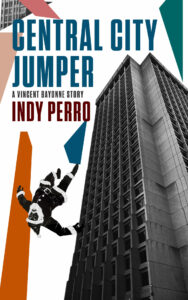What is simpler than how.
Know exactly what you want to do, not necessarily how you are going to get there, but what you want to do in as much detail as possible. Then intuit.
Knowing what you want to do in as much detail as possible marks the start of the journey. Getting there is the journey, the path and practice, of writing.
Ignorance is the first step toward understanding.
We all need to know what we don’t know in order to know what we know. If you convince yourself you’re right, you haven’t done anything other than preach to the choir. If you know how your interpretation fits with the broader category of work, the communal understanding of a particular subject or experience, you can help people who share your interests to relate to your interpretation.
If wisdom begins in wonder, possibility begins in the imagination.
If you know what you are trying to do, you will be able to plot a trajectory. Imagining, in great detail, what your desired outcome could be will give you a sense of purpose and possibility. Understand what you don’t know and begin formulating questions. The answers to your questions will help you move beyond ignorance. You’ll begin to see more and more of the puzzle, and you’ll fill in the edges of your map.
Critics read linearly. Artists read polyphonically.
Critics and audiences have the benefit of experiencing a work of art in real time. They begin at the beginning of a finished product and move to the end. The artist who creates a work of art has to experience it all at once. She needs to begin anew every time she resumes work. She needs to see all of the connections. Those connections can’t unfold for her as they do for the audience. She needs to know what will happen before it happens, to know the relevance of things past when she crafts the words of the future, and to see all the relationships between each experience of consequence.
The story is the journey from ignorance to understanding.
If you begin with what you want, you begin with an understanding of what you don’t know, oriented according to what you need to learn. You, the writer, then follow the journey of discovery that your reader will take. The difference between your journey and the reader’s, of course, is that you’re fashioning the journey for them. You’re blazing a new trail, and you provide for them a paved path. You’ve taken them from ignorance to understanding in a fraction of the time.
The kicker, of course, is that the writer’s journey is more complete, more robust, and, I believe, more fulfilling. But it’s not for everybody.
Image by Claudia Lorusso courtesy of Unsplash.
How have you learned what you didn’t know? What tools did you use to move beyond where you were, beyond what you already understood? Share your journey in the comments below.




